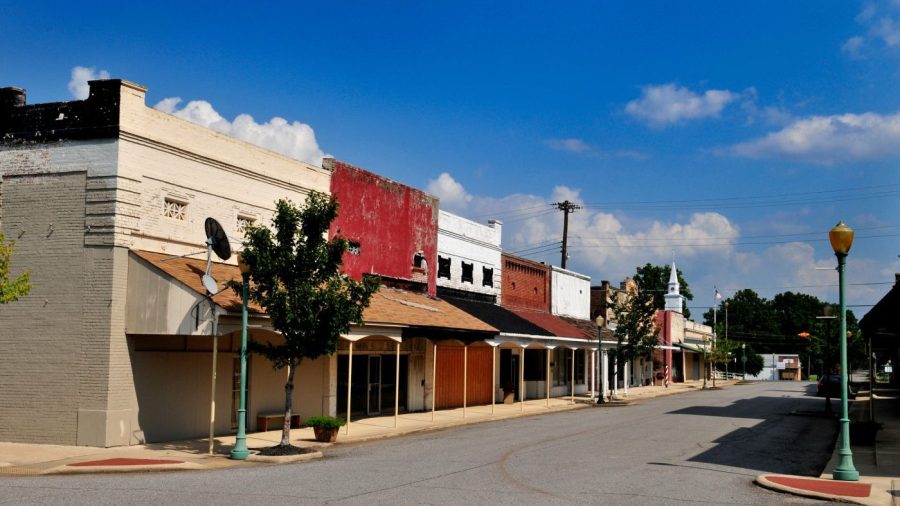
Once the embodiment of the quintessential American spirit, numerous small towns across the United States have succumbed to the relentless march of progress. These communities, which once dotted the landscape with vibrant Main Streets and bustling local businesses, now stand as ghostly reminders of a bygone era. The shift from thriving towns to desolate relics is a narrative that echoes across the country, raising questions about the true cost of progress.
These towns were the living, breathing personification of “Americana,” yet many have been erased from the map, casualties of what some call “inevitable progress.” The transformation of these communities offers a poignant reflection on the changing face of America, where the pursuit of modernity has often overshadowed the preservation of heritage.
The Rise and Fall of Main Street USA
The tale of these disappearing towns is intricately tied to the evolution of American infrastructure and economy. During the early to mid-20th century, towns along routes like Route 66 thrived as essential stops for travelers. Known as the “Main Street of America,” Route 66 was emblematic of the freedom and adventure associated with the American Dream.
However, the development of the Interstate Highway System in the 1950s, designed to improve national connectivity, inadvertently bypassed many of these towns. As highways rerouted traffic, the lifeblood of these communities—tourism and local commerce—dried up. Businesses closed, populations dwindled, and once-vibrant streets fell silent.
Economic Shifts and Cultural Impact
Beyond infrastructure, broader economic shifts have also played a role. The decline of manufacturing in the Rust Belt, for instance, led to significant job losses, prompting residents to seek opportunities elsewhere. This exodus left many towns struggling to maintain their economic viability.
According to a report by the National Trust for Historic Preservation, the loss of these towns represents not just an economic blow but a cultural one as well. “These communities were the heart of American culture, where traditions were born and passed down,” the report notes.
“The disappearance of these towns is not just about buildings and roads; it’s about losing a part of our collective identity,” said a spokesperson from the National Trust for Historic Preservation.
Preservation Efforts and Challenges
In response to this decline, various preservation efforts have emerged. Organizations and local governments are working to revitalize these areas, often focusing on heritage tourism as a means to attract visitors and investment. However, the challenge remains daunting, as many towns lack the resources or appeal to draw significant interest.
The American Automobile Association (AAA) has highlighted some success stories where towns have reinvented themselves by embracing their historical roots. Yet, for every success, there are numerous others that continue to struggle.
Looking Forward: Balancing Progress with Preservation
The story of these vanishing towns raises critical questions about how to balance progress with preservation. As the nation continues to evolve, the importance of maintaining a connection to its past becomes increasingly evident. Experts suggest that a more integrated approach to development, one that considers the historical and cultural value of these communities, could provide a path forward.
Reflecting on the words of John Steinbeck, who famously chronicled the American experience, “Progress might have been all right once, but it has gone on too long.” This sentiment resonates today as we grapple with the consequences of unchecked development.
As America moves forward, the challenge will be to ensure that the spirit of these towns, and the lessons they offer, are not lost to history. The future may hold new opportunities for these communities, but it will require a concerted effort to honor their past while embracing the possibilities of tomorrow.






